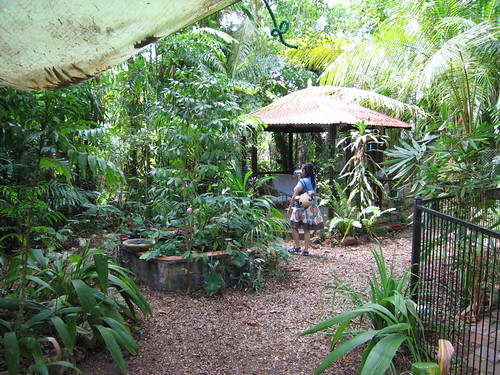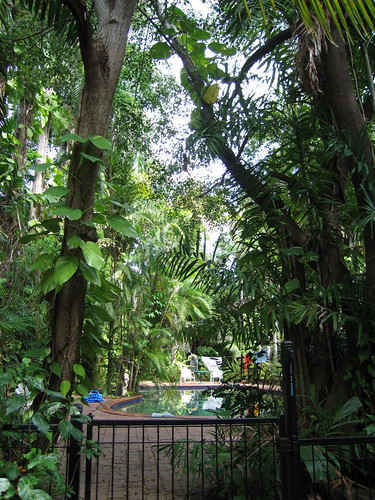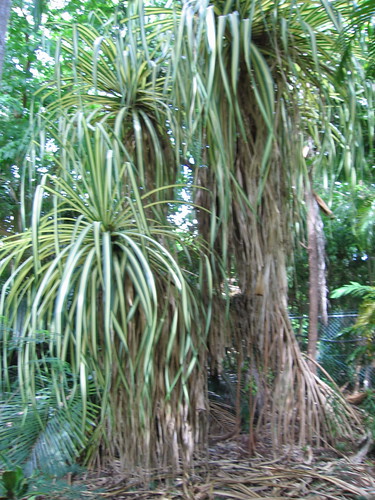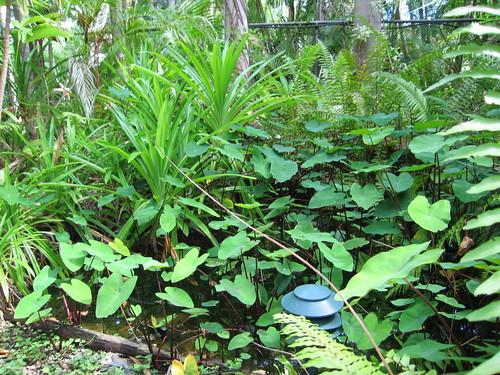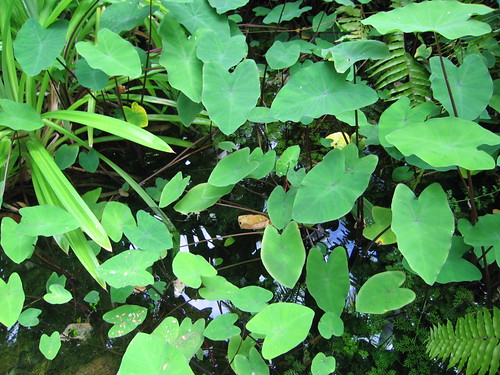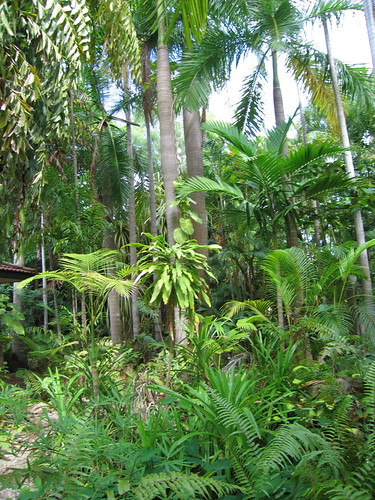Our Old Home
gga
#2008-01-25
Our family moved to Darwin in mid-1986, after migrating from Wellington, NZ to Katherine in May of that year. Sometime between my birthday (5th December) and Christmas we moved into 4 Cunjevoi Cres, Nightcliff. I can’t remember exactly when; I was young. From then on, my Dad worked on improving the house and garden. Over the next fourteen years the garden evolved into (in my opinion) one of the better examples of a tropical garden you’re likely to find in Darwin. A couple of points:
- There was a noticeable difference in temperature when you walked through the front gate: it was at least a couple of degrees cooler. And in the middle of the Darwin wet season, you appreciated that.
- No grass. The green cancer is woefully unsuitable for all Australian climates, but tropical gardens with large expanses of lawn are virtually uninhabitable.
- We had a continuous set of native residents: skinks, possums, blue-tongue lizards, green-tree snakes, honey-eaters nesting off the balcony: we had it all.
I haven’t been back to Darwin since sometime in 2003. My Dad finally finished and sold the house at the end of 2004. I was the first of our family back in the city since then, so I made sure to visit the old house. The owners weren’t home, but one of their tenants were. She opened the gate; I circled the house and took some photos.
Overall, Darwin was something of an experience after so many years. I always knew I didn’t quite fit in, but you need to live somewhere else before you can really understand why. Fun fact: the local Darwin dialect has no equivalent word for Bogan. Make of that what you will; I know what I make of it.

